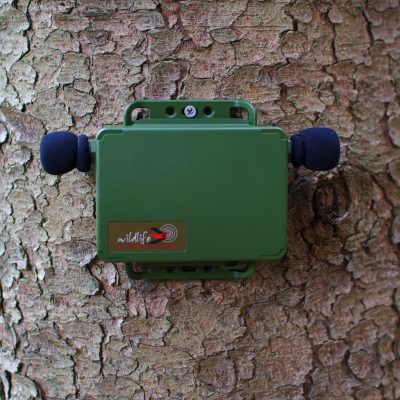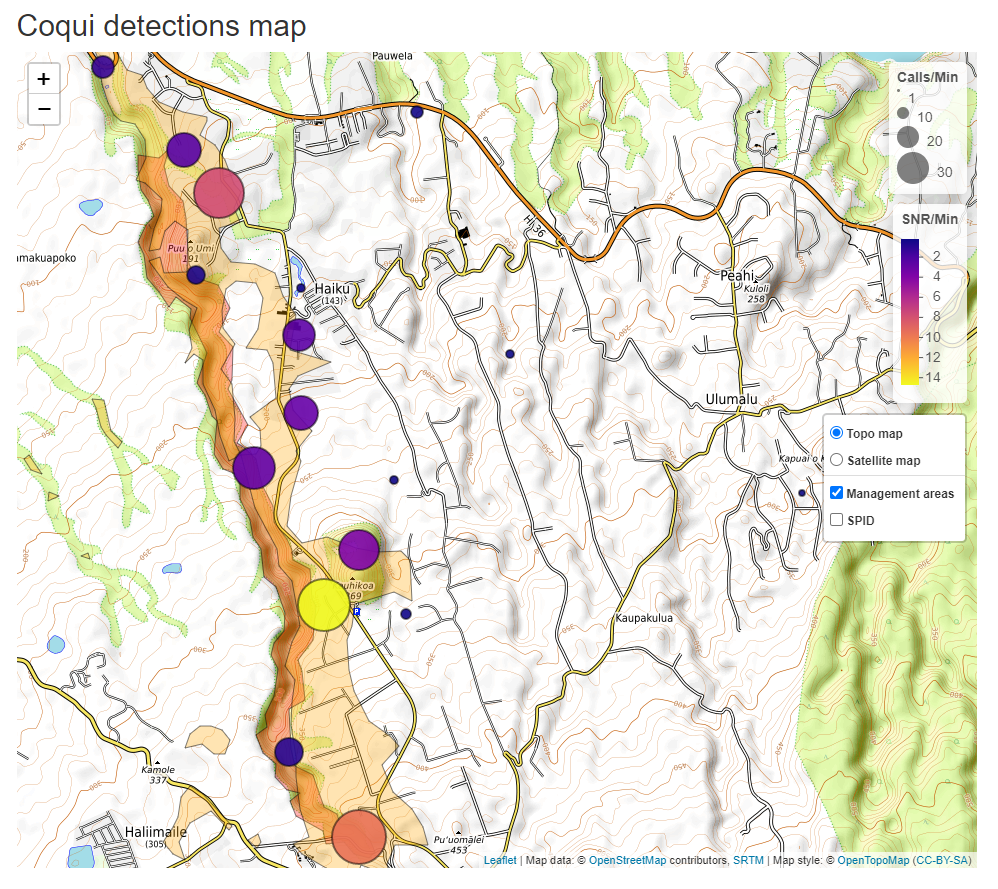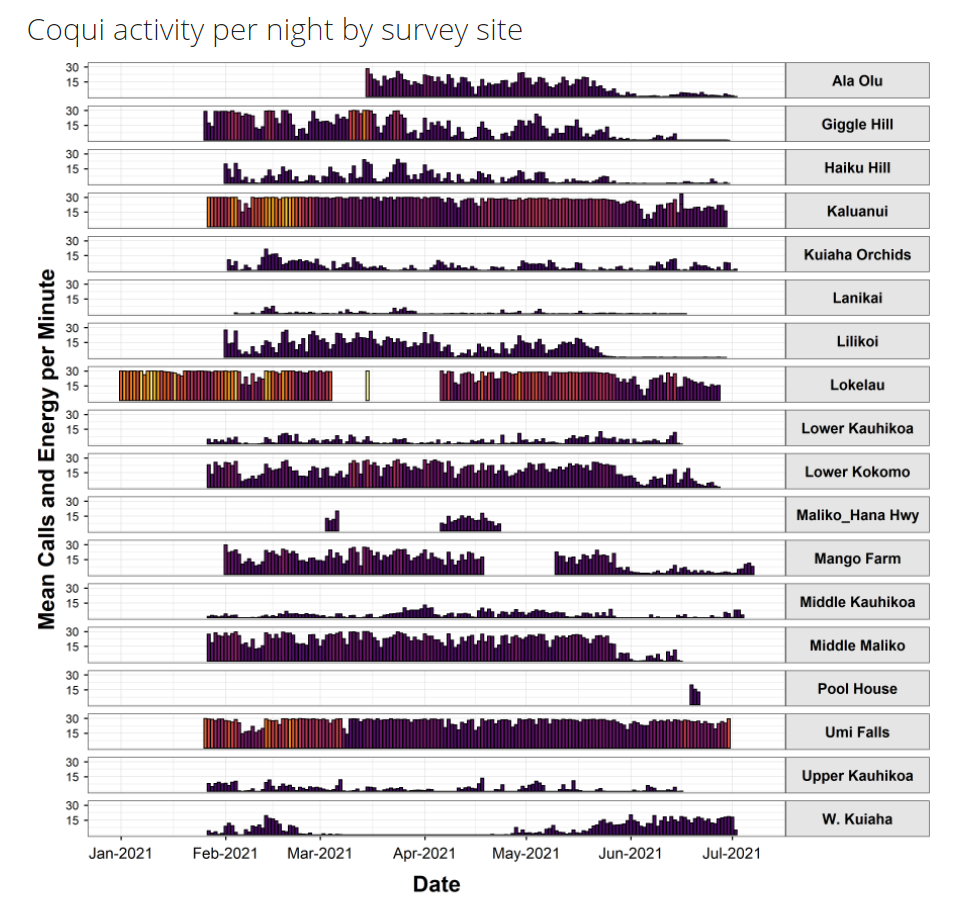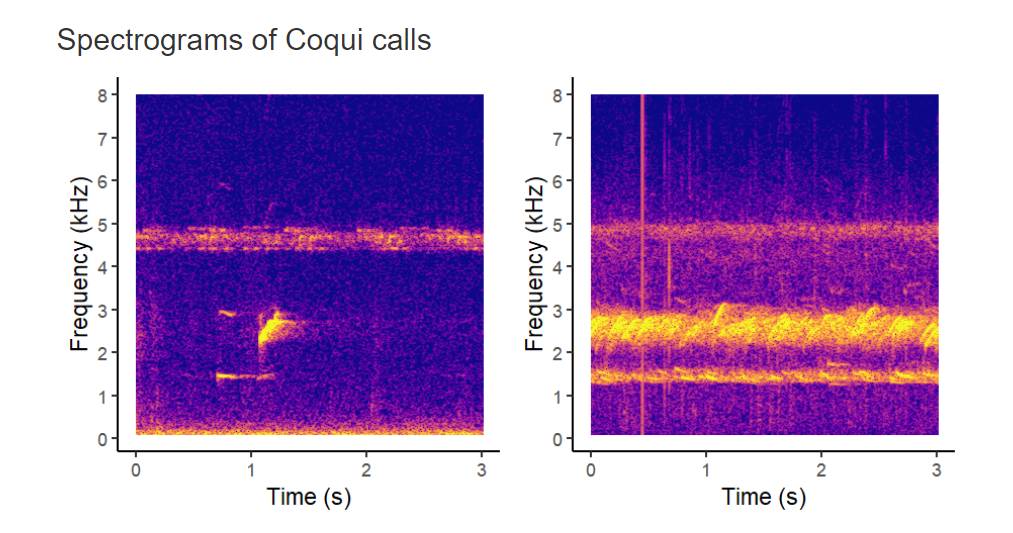
Beginning in late 2020, MISC began working with Conservation Metrics, Inc. (CMI) to develop a coqui acoustic monitoring program. Seventeen initial Song Meter Mini’s from Wildlife Acoustics were deployed on private property around Haʻikū by the end of January 2021.

The initial goal was to collect a variety of data from locations with different sounds and differing levels of coqui calling. CMI was able to use the data collected from January through May of 2021 to develop an algorithm which can automatically recognize coqui calls in the recordings. Using this algorithm, they are able to quantify call frequency (calls per minute) at each location. They have also been analyzing the signal to noise ratio of acoustic energy from coqui calls relative to background noise. This provides a measure of relative coqui call intensity in the recordings, which may be understood as the loudness of the calls at each location.

Additionally, CMI was able to plot coqui activity as a function of time based on local sunset data to show how coqui activity rises quickly after sunset and slowly falls until sunrise the next day. Each of the audio monitors begins recording one hour before sunset and stops recording one hour after sunrise. The sampling period is set to record one minute every ten minutes during this time period.

The following image shows two different sample spectrograms of coqui calls. The yellow color between two and three kHz is the lower “co” part of the coqui call and the higher part near five kHz is the “qui” part of the call. The first image shows one coqui calling, the second shows many coqui calling.

Using these acoustic monitors has allowed MISC the opportunity to collect data that will help to further understand coqui population dynamics over time, eventually enabling presence/absence monitoring for single outlier frogs. It has also provided a lot of interesting recordings of coqui frogs!
These recordings are from four different levels of coqui infestation. All were collected at 8:14 p.m. on May 12, 2021.
In July of 2021, additional monitors were deployed in areas where the coqui crew is now conducting coqui control spray activities. This data should demonstrate the efficacy of MISC coqui control activities and how quickly coqui rebound after treatment.


